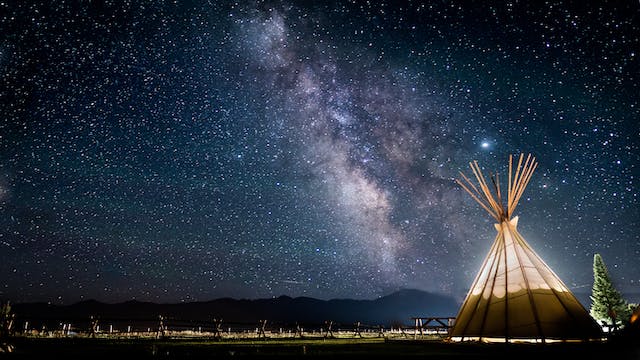
What is the difference between a wigwam and a teepee? They have a different shape, are made of a different material, are constructed differently and are used in different regions. The only real similarity is that they are both used by Native Americans as a place to live in.
A teepee is a conical tent that has open smoke flaps at the top. The word comes from the Dakota and Lakota languages and it simply means “dwelling”. When it was first written down in English, it was spelled as tipi. Native Americans and Canadians still spell it tipi, but in the USA and Britain it appears to have become teepee. Both spellings are accepted. The Native Americans that used teepees lived on the Great Plains of America all the way up into the Canadian prairies. It is a wide expanse of land that stretches up the center of North America, to the east of the Rocky Mountains. These areas are large and flat and support many animals. Before Europeans arrived and they were forced off their land, the people in these areas gathered wild rice and crops, hunted bison and woodland animals, and fished in the rivers and lakes. They were often nomadic people and they needed dwellings that they could move with them.
A teepee is generally made of 15 poles that are about 5 meters long. The poles are tied at the top, then twisted as they are raised to cross the poles over and give them more strength and support. The bottom ends of the poles are opened to make a circle that is about 3 meters across. Then they cover the poles with a sheet made of sewn together tanned buffalo skins, which is insulating and waterproof. The skin is staked down, so the wind can’t blow it off. They have a flap at the top to let smoke out. It is designed so that smoke can get out, but rain and wind can’t get in. The teepees would be taken down and towed behind horses or pulled by hand to the next location, where camp would be set up again. The camps were usually a circular arrangement of teepees with the most important people at the center, moving out to the least important people. The teepees had smoke holes, so people could cook inside them.
A teepee is meant to be moved, but a wigwam is more permanent. The word wigwam probably came from the Algonquian word “wikewam”, which also means “a dwelling”. There were many tribes that spoke this language, but they generally lived in the northeastern United States and Canada.
There are many different types of wigwam, which makes describing them tricky. Each tribe had their own way of making one, depending on what resources they had to hand. However, they were generally a similar shape. They had round sides and a domed top. They were made out of a frame of easy to bend wood, usually saplings. The supports were bent into arches and rings of saplings were tied around them. They had a similar diameter to teepees, about 3 meters, and were probably about 2 meters high. The frames were covered in grass, bark, reeds, or anything else that would make a windproof cover. They were rainproofed using tanned buffalo hides. The top of the roof was left open for a chimney, but this was covered up if the weather was too bad. The support sticks were dug into the ground, so the wigwams were very sturdy. It took about three days to build one. The ground inside was covered with grass and brush, and robes and skins were spread on that to sleep on. They were very well insulated and were warm even with the heavy snow of winter.
During the American Civil War, British troops used the words wigwam and teepee, along with many of the other names for Native American houses, interchangeably. This is probably why many people think that wigwams and teepees are the same thing.
Some plains Native Americans still live in teepees and some northeastern Native Americans live in wigwams, but they are fairly rare these days. There are 5.2 million native Americans living in the USA these days and 78% of them don’t live on tribal lands. The laws against Native Americans and the conquests to the west forced them off their land and they were made to live on reservations that were pretty terrible land. It was not easy, or even possible, to live a traditional life. Up to 63% of Native Americans living on reservations live below the poverty line. And this is what I learned today.
Photo by Chait Goli: https://www.pexels.com/photo/photo-of-teepee-under-a-starry-sky-2666598/
Sources
http://www.differencebetween.net/language/words-language/difference-between-wigwam-and-tipiteepee/
https://en.wikipedia.org/wiki/Tipi
https://en.wikipedia.org/wiki/Great_Plains
https://en.wikipedia.org/wiki/Wigwam
https://www.etymonline.com/word/wigwam
https://www.thecanadianencyclopedia.ca/en/article/algonquian
http://www.nativepartnership.org/site/PageServer?pagename=naa_livingconditions
